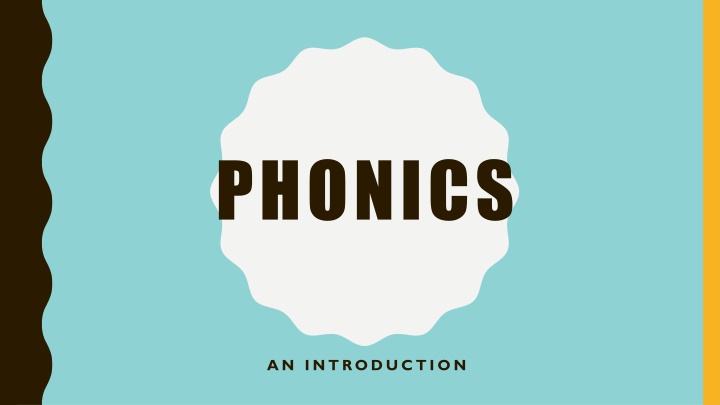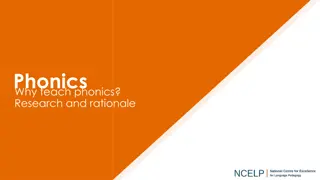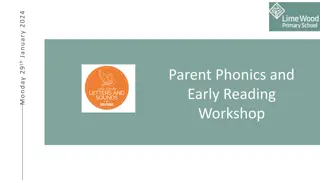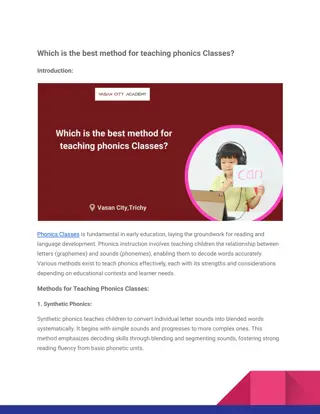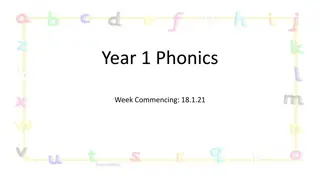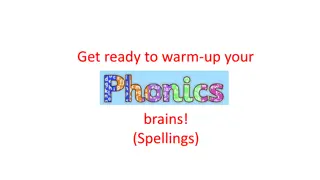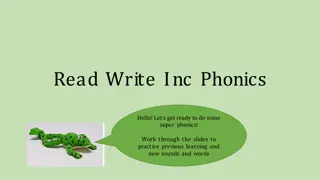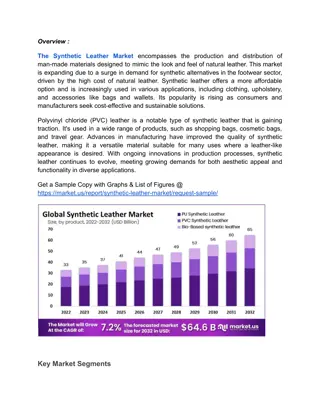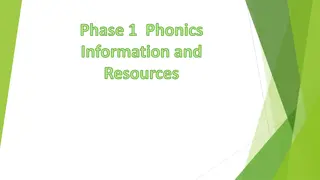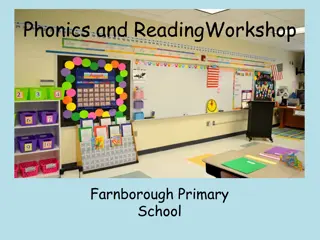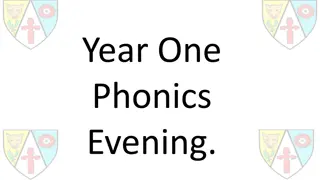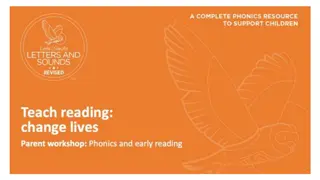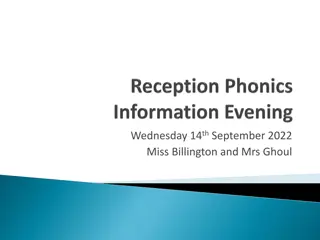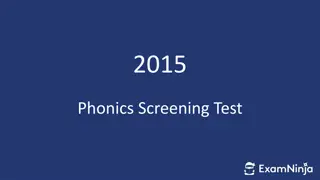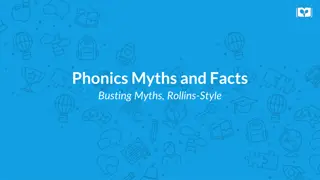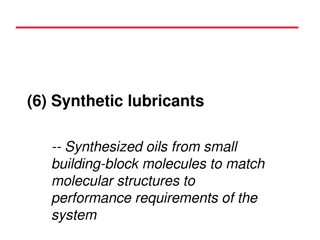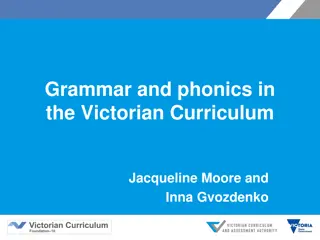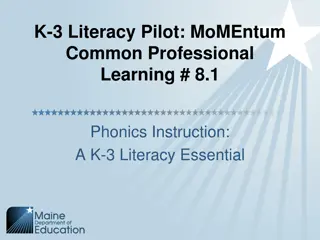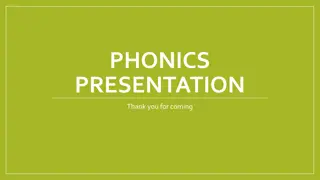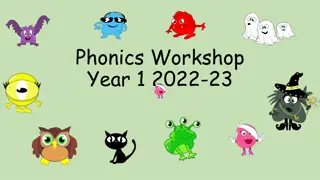Phonics: An Introduction to Systematic Synthetic Approach
Phonics is a fundamental method for teaching children to read by associating letters with their corresponding sounds. This systematic synthetic approach gradually introduces children to various ways of spelling sounds, building upon their existing knowledge. Implementing schemes like Little Wandle helps support children's phonics learning, offering daily lessons and intervention programs for those who require additional support. Tricky words, which don't follow conventional phonetic rules, are also addressed in phonics education. Different phases of learning, such as Phase 1, 2, 3, 4, and 5, play a crucial role in enhancing children's reading abilities.
Download Presentation

Please find below an Image/Link to download the presentation.
The content on the website is provided AS IS for your information and personal use only. It may not be sold, licensed, or shared on other websites without obtaining consent from the author.If you encounter any issues during the download, it is possible that the publisher has removed the file from their server.
You are allowed to download the files provided on this website for personal or commercial use, subject to the condition that they are used lawfully. All files are the property of their respective owners.
The content on the website is provided AS IS for your information and personal use only. It may not be sold, licensed, or shared on other websites without obtaining consent from the author.
E N D
Presentation Transcript
PHONICS AN INTRODUCTION
SYSTEMATIC SYNTHETIC PHONICS Phonics is a way of teaching children to read by introducing letters and their correlating sounds. It is taught systematically, children are gradually introduced to more ways of spelling sounds and each phase builds on existing knowledge. In phonics, instead of looking at each letter as making an individual sound we look at how combinations of letters can produce sounds. For example ear is one sound, one syllable and one word but made up of 3 letters. Using phase 2 and 3 sounds we can make a variety of words: Hear, tear, fear, shear.
LITTLE WANDLE Little Wandle is the main scheme that we use to support the children's phonics. We use it for daily lessons for EYFS as well as year 1. If children are falling behind it provides support through daily keep up programme to keep boosting their phonics knowledge. It also supports interventions using rapid catch-up for children in years 2,3,4,5 and 6 who didn t pass their phonics screening in year 1. All our staff are trained to best support our children by using the corresponding phase books in order to apply their learning.
Tricky Words These are words that do not follow the usual segementing and blending pattern. We encourage children to practise raeding these as sight words but we also talk about the tricky part of the word.
WHAT DOES PHONICS LOOK LIKE IN ARMSTRONG MN Start with the sound whole class Apply the sound in group blending Independent blending Tricky words Apply it in a sentence Throughout the day there will be at least one phonics activity included in carousel learning
PHONICS SCREENING The phonics screening test will happen in term 2 for year 2 and in term 6 for year 1. It is set by the government to measure reading ability. The pass rate has been 32 out of 40 for the last 5 years but may change (although considered unlikely). It a quick word reading exercise 1:1 with the teacher. There are a variety of real and pseudo words to read.
SUPPORT IN SCHOOL Interventions: In school we have interventions to support children s phonics. We have daily keep up to support children on a daily basis. We also have rapid catch up throughout the school to support children who didn t pass their phonics screening in year 1. Reading groups: In year 1 we have reading groups every day. The children have been placed in their relevant phase groups. From this we read the appropriate phase book.
TO SUPPORT AT HOME Reading regularly is one of the best things you can do to support your child, sharing books, looking at sounds and discussing stories will build up confidence, fluency but most importantly enjoyment! Practising recognising the phonics sounds Playing games Writing in reading records Practising tricky words
